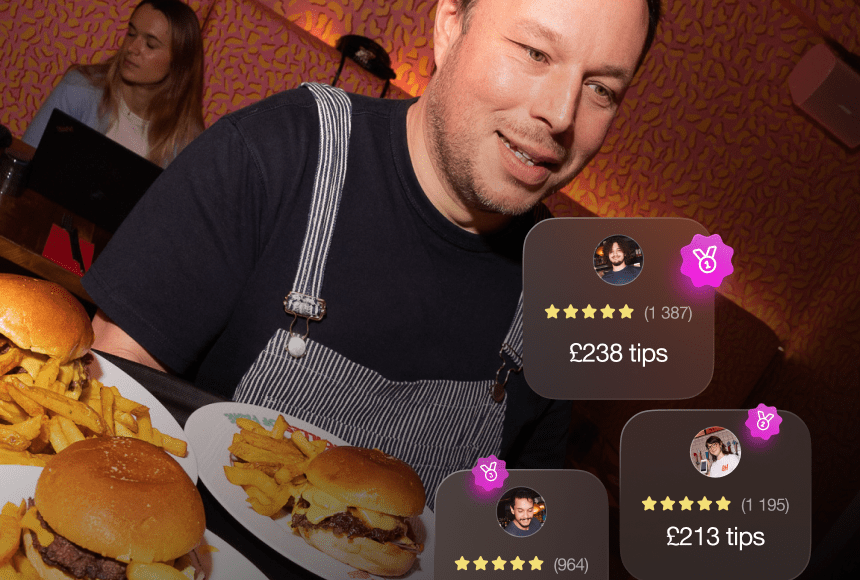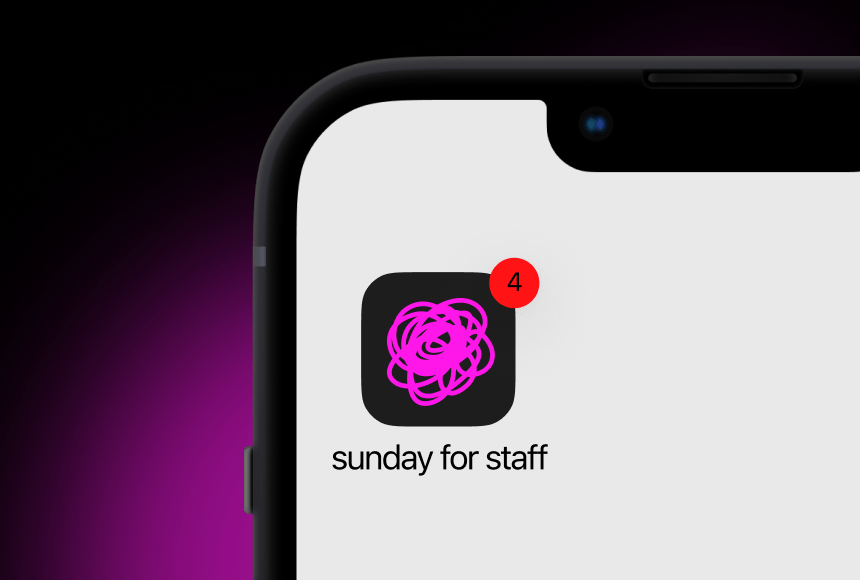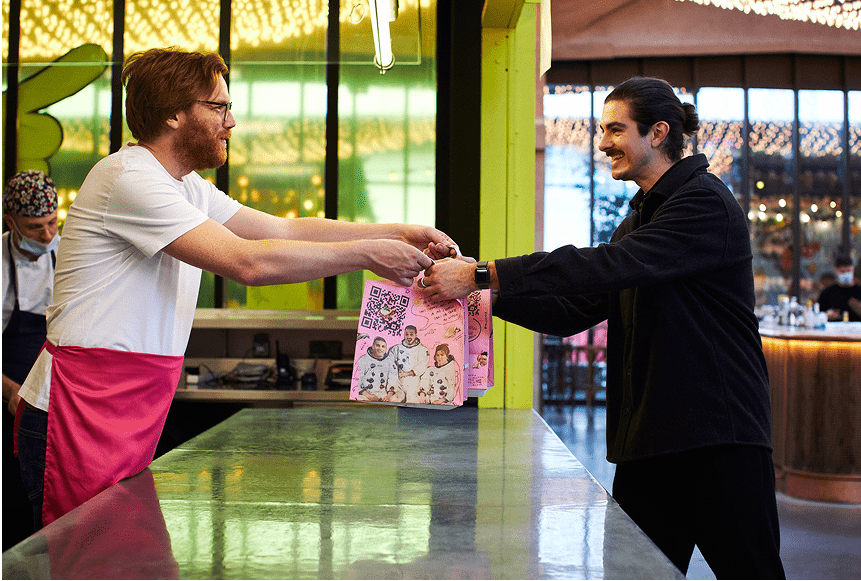
Empower Your Team with a Seamless Digital Tipping Experience
Understanding the Shift to Digital Tipping
Digital tipping is changing the game for restaurants across the UK. What used to be a few spare coins left on the table or an added line on a paper receipt has evolved into a smooth, quick, and flexible process. Nowadays, diners can instantly tip via a tap of their smartphone—no fumbling for notes or awkward hesitation at the counter.
Some establishments worry that going digital might remove the personal touch from tipping. In reality, it does the opposite: It lets guests reward you in a more modern, transparent way. Plus, customers increasingly expect contactless and digital payment options. According to a 2021 YouGov survey, nearly half of UK consumers prefer contactless payments when dining out, and digital tipping goes hand in hand with that experience.
Make no mistake: tipping is still a token of appreciation, a way for customers to say “thank you” to a dedicated team. But by digitising it, you remove social pressure while ensuring that tips actually reach the people who made the dining experience special—your staff.
Why Digital Tipping Helps Restaurants — Stats and Insights
Restaurants that switch to digital tipping solutions often see bigger tip amounts, more frequent tipping, and happier staff. It might feel counterintuitive that by giving customers an easy, electronic method to tip, you’re dispensing with the old tradition of spare change in a tip jar. But the numbers back it up:
- An UKHospitality report reveals that digital-savvy diners tend to be more generous: over 60% of participants said they tip more when they can do it via card or mobile.
- Servers, bartenders, and kitchen staff feel recognised for their work more directly, as the tip distribution becomes transparent and trackable through digital systems.
- By offering a seamless tipping experience, you reduce friction at the payment stage, which often encourages guests to be more open to adding a tip.
Taken together, these benefits help build a better work environment and encourage service excellence. Instead of staff feeling shortchanged or unsure whether gratuities were split fairly, they have real-time clarity. And that knowledge can go a long way in motivating teams to deliver top-notch service—knowing that a job well done can result in a well-documented reward.
Eliminating Pressure: Putting Guests in Control
One of the most frequent complaints from diners is the tension they feel when deciding how much to tip, especially in front of a busy server or at a register bustling with impatient customers. A digital tipping solution can convert an awkward moment at the till into a private, comfortable interaction on a guest’s own device.
Think of it like cooking at your own pace rather than having a chef peer over your shoulder. You remove the anxiety, giving the guest time to reflect on the service received and make a tip decision they’re happy with. No hovering. No embarrassment.
In traditional tipping, some diners end up tipping out of guilt or social expectations, which doesn’t reflect on the genuine quality of your restaurant’s service. True generosity springs from gratitude. With digital tipping, gratitude can happen freely. This fosters more sincere tips—often higher ones—that truly mirror positive customer experiences. And that authenticity is what drives a loyal customer base.
Boosting Staff Motivation Through Transparent Rewards
“Transparency” is the magic word that sets digital tipping apart from the old ways. Picture this scenario: a restaurant runs a hectic Sunday brunch service, servers collect a flurry of notes, change, or card add-ons, and at the end of the day, the tips are tallied by hand. Mistakes can happen. Arguments can arise. Staff might worry about fairness.
Setting up a digital tipping system removes that confusion. Today’s modern platforms let you see at a glance how much was tipped per table. You can then automatically confirm how those tips are distributed among servers, bartenders, and the kitchen staff, based on your policy. That clarity eliminates guesswork.
When employees trust the system, they focus on performing better. They know their efforts are noticed and rewarded. Plus, digital solutions often let staff track how they’re doing daily, weekly, or monthly, reinforcing positive behaviour and improving teamwork. A bit like a high-performance kitchen with open lines of communication, this system fosters transparency and personal growth.
Embracing Technology: The New Frontier of Restaurant Service
The restaurant world has been through major shifts, from the rise of contactless card machines to the emergence of QR codes for ordering and paying. Digital tipping is simply another step in that evolution. Many diners now expect to see these options, as they do with online food delivery.
Don’t be concerned that digital tipping will undermine the human side of hospitality. On the contrary, having an efficient payment process—where the tip portion is integrated with the final bill—frees up your staff to focus on warm, genuine interactions. Instead of spending time apologising for the slow card machine or rummaging for a pen, your staff can ask how the meal went, share cooking tips, or recommend dessert.
In the UK especially, where restaurant culture thrives on friendly service and personal touches, weaving technology into daily operations is not about losing tradition; it’s about adapting to the preferences of today’s consumer. You’re effectively combining the old charm of British hospitality with the ease of modern convenience.
Practical Ways to Implement Digital Tipping
There are various ways to get digital tipping up and running in your restaurant. As you evaluate your options, keep these important factors in mind:
- Integration with your existing payment process: Does the digital tipping platform work seamlessly with your current billing software? Or is it part of a bigger solution that includes QR code payments, quick check-splitting, or table-side ordering?
- Ease of use for diners: The entire point of going digital is to make things easier. Make sure the interface is intuitive. One or two taps at most should do it.
- Transparency in tip distribution: Check if the software allows for immediate splitting of tips among staff. This helps maintain fairness.
- Analytics and reporting: Useful data can show you tipping patterns, busy hours that produce higher gratuities, and staff performance.
- Security: Payments involve sensitive data, so ensure the solution adheres to UK data protection laws and global standards such as PCI DSS (Payment Card Industry Data Security Standard).
Many restaurants decide to roll out a comprehensive payment system that includes the ability to pay and tip by scanning a QR code. For instance, solutions like sunday let diners settle their bill in seconds without waiting for a card machine, plus they can leave digital tips that go directly to your team. In some cases, these platforms offer additional features—like prompting customers to post a review on Google as soon as they’ve paid, harnessing that satisfied moment to boost your online presence.
Case Study: The Cozy Bistro’s Road to More Tips
Consider a fictional restaurant: The Cozy Bistro, a small but bustling eatery in a London neighbourhood. Like many independent restaurants, The Cozy Bistro prided itself on its laid-back atmosphere, fresh ingredients, and friendly staff. But when it came to receiving tips, they were stuck with a dated process. Customers would either hand over spare coins or awkwardly fill in a blank space on a paper bill if they were paying by card.
One day, The Cozy Bistro decided to launch a new payment system with QR code menus and digital tipping built into the checkout screen. They put a small sign on each table: “Scan to pay and tip in one go—no need to ask for the bill.”
At first, staff worried that losing face-to-face tipping interactions might lead to smaller gratuities. However, within the first month, The Cozy Bistro actually saw tips increase by 25%. Customers received their bills quicker, felt no pressure to tip in front of staff, and even had the option to add a personal note or rating. Which led to:
- Reduced table turnover time—people paid and left more efficiently, opening up space for new guests.
- Improved staff communication—servers could see tips per table, the system took care of dividing them fairly, and they had fewer end-of-shift misunderstandings.
- Positive reviews—guests who used the digital payment could seamlessly post feedback on Google, boosting The Cozy Bistro’s online rating.
By removing the guesswork and the uncomfortable “How much should I tip?” scenario, The Cozy Bistro fostered a relaxed ambiance, which was in line with its brand identity. Service quality improved because the servers felt valued, and management saw the tangible benefits of a straightforward, digital approach.
The Human Touch: Why Digital Doesn’t Mean Impersonal
In some corners, there’s a misconception that going digital strips away humanity. Yet remember that good service is never just about how diners hand over money. It’s about the conversations, the bond that forms between a warm server and a regular patron, and the shared delight in a well-executed dish.
If anything, digital tipping can enhance those relationships: your staff isn’t busy tallying or waiting on a slow card machine. Instead, they can recommend new craft ales or chat about the day’s fresh catch. Meanwhile, a simple digital prompt invites the diner to show their appreciation for that stellar experience, offered up as a friendly nudge—never an obligation.
Think of digital tipping as a finishing touch: the flourish of garnishing a plate. It doesn’t replace the main course of quality service, but it makes the experience all the sweeter. Your restaurant can remain authentic, independent, and personal while keeping up with the pace of modern life.
Addressing Common Concerns About Digital Tipping
Let’s tackle the questions that come up most frequently when restaurant owners mull over a switch to digital tipping.
- Will guests be confused or hesitant?
Many diners appreciate the convenience and familiarity of scanning QR codes, especially post-pandemic, so the learning curve is usually minimal. - Does the staff lose any personal connection with guests?
Not at all. If anything, staff spend less time waiting for the card machine to process and more time engaging with diners. That fosters a personal touch. - Is the tip distribution truly fair?
With the right platform, you set up how tips are divided among servers, kitchen staff, bartenders, etc. Everything is recorded and can be reviewed, making the system far more transparent overall. - How do I ensure compliance with legal regulations?
Make sure to comply with the UK’s rules on tip distribution. A well-built digital platform can guide you through tip handling so that you remain fully above board.
These questions usually reflect a broader curiosity about adapting to emerging payment technologies. But with a touch of planning and the right choice in software, restaurants find that digital tipping solutions blend smoothly into daily service.
Incentivising Quality Service Without the Guilt Trip
One major advantage of digital tipping is that people tip because they genuinely want to, not because they feel pressured. By virtually removing the “eyes” of staff or other diners at the checkout stage, gratuities become an honest measure of how much your service has delighted the guest.
A digital prompt can offer preset suggestions (for example, 10%, 12.5%, or 15%), or let people choose a custom amount. Simple, discreet, and effective—this approach maintains “best practice” while putting control firmly in the diner’s hands. If they had an extraordinary experience, they can select a higher percentage or type in a figure that makes sense for them.
Such sincerity in tipping encourages staff to deliver consistent excellence. If your team is naturally friendly and skilled, they can expect fair recognition for going above and beyond. Meanwhile, the absence of a guilt trip keeps the overall feel good for everyone involved. In short, it’s an open, honest cycle of service and reward.
Rewarding Everyone: Bigger Pie, Fairer Slices
Digital tipping isn’t merely about the moment a meal ends. It creates a ripple effect that boosts the entire restaurant environment. Once your system is set up, you can define how tips get shared, ensuring everyone from the greeting host to the dishwasher benefits. After all, delivering an outstanding customer experience is a team effort.
Perhaps you opt for a system that splits 70% of tips among frontline staff and 30% among back-of-house workers. Or maybe you have a pool that’s evenly shared across all colleagues. Whatever structure you choose, digital tipping platforms keep track of distribution automatically, so you don’t need to do complicated arithmetic after a long shift.
Imagine it as a family meal where everyone contributes: the server who introduced the special of the day, the bartender who crafted a unique mocktail, and the chef who nailed every cooked-to-order steak. By rewarding the group fairly, you encourage each team member to play their part at the highest level.
A Quick Look at Key Benefits in a Table
| Benefit | How It Helps |
|---|---|
| Less Pressure for Diners | They can leave a tip privately on their own device. |
| Higher Tip Amounts | Digital solutions often lead to a 15–25% increase in gratuities. |
| Transparent Distribution | Tips are fairly shared thanks to digital tracking. |
| Staff Motivation | Real-time clarity on tip earnings boosts performance. |
| Customer Satisfaction | Fast checkout reduces waiting times and awkward moments. |
From Payment to Online Reputation
Another neat side-effect of digital tipping is that it can integrate seamlessly with reputation management. After paying, a happy customer may be more inclined to leave a glowing review. Some solutions, like sunday, incorporate a prompt for a Google review right after the tip confirmation.
The upside is twofold: you capture feedback while it’s fresh in the diner’s mind, and you accumulate authentic reviews that can help your recruitment and future marketing efforts. Potential new diners see the positive testimonials, your staff earns more tips, and your restaurant’s brand recognition grows.
The hospitality world is highly competitive, so any tool that leverages a diner’s positive energy in-the-moment can make a difference. Reviews shape perceptions—often more than flashy ads or polished social media efforts. If the service is strong, why not let technology highlight that fact?
Frequently Asked Questions (FAQ)
Below are some common questions restaurant owners raise about digital tipping and its impact.
1. Will implementing digital tipping disrupt my service flow?
Not if you choose a streamlined system. In fact, digital tipping can smooth out your service by speeding up the payment process and allowing staff to focus on guests, rather than juggling card machines or counting cash.
2. Is it expensive to adopt a digital tipping solution?
Costs vary depending on the provider and features. Many platforms charge a reasonable transaction fee, comparable to typical payment processing. When you weigh these expenses against the boost in tip revenue and the overall improved guest experience, the investment often pays off quickly.
3. Do I lose tips if my diners aren’t tech-savvy?
Most UK diners are already accustomed to scanning QR codes for menus or paying contactless. Even those who prefer traditional card payments or cash can be guided gently by your staff. Offering both options—digital and conventional—ensures you capture every preference.
4. How do I maintain team unity when tips are digital?
With a transparent digital system, it’s easier to avoid disputes. Everyone knows how the tips are split, removing suspicion or confusion. This high level of clarity often increases trust among colleagues, boosting morale and improving collaboration.
5. Does digital tipping really lead to higher overall tips?
Most restaurants that adopt digital tipping solutions report a notable increase in gratuities—often in the range of 15% to 25%. Because the process is more frictionless and discreet for guests, they’re often willing to tip a bit more.
A Forward-Looking Approach
Digital tipping is not a fleeting trend; it’s a reflection of how swiftly the restaurant industry is embracing technology to simplify operations, uplift staff morale, and enhance guest satisfaction. Just as restaurants once debated the pros and cons of offering takeaway services or integrating card payments, we’re now at a crossroads with tipping innovation.
UK diners appreciate clear communication, simplicity, and flexibility. By meeting them where they are—on their phones, in a contactless world—you’re demonstrating that your restaurant respects their time and comfort. And, crucially, you’re empowering your team with a fair, transparent reward system.
Consider your establishment’s unique needs: Is your focus on higher staff happiness, smoother table turnover, or frictionless guest experiences? Whatever your goal, digital tipping can be a vital component in achieving it. When you remove the pressure and embrace transparency, you create a win-win situation: a happy team that’s motivated, and customers who know their gratitude has been duly noted—no awkwardness involved.
Find out more today
Drop us your details below and we’ll reach out within the next 24
More tips means a better service.
3X more tips mean 3X better guest-experience, and 3X better staff-retention.




